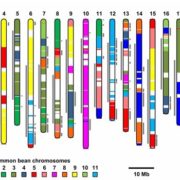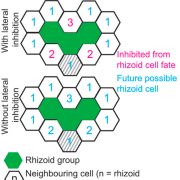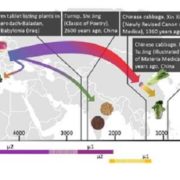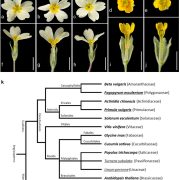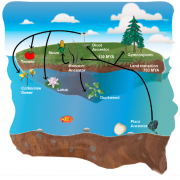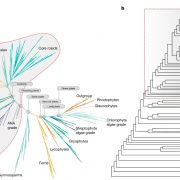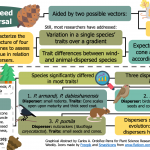On the origin of giant seeds: the macroevolution of the double coconut (Lodoicea maldivica) and its relatives (Borasseae, Arecaceae) (New Phytol.)
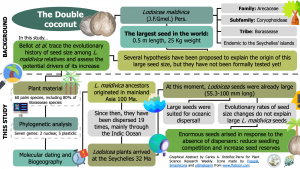 The double coconut –Lodoicea maldivica (J.F.Gmel.) Pers. (Arecaceae: Coryophoideae)– is an endemic palm from Seychelles with the largest seed in the world: 0.5 m length and 25 Kg weight. Several hypotheses have been proposed to explain the origin of this enormous seed, but they have not been formally tested. Here, Bellot et al. trace the evolution of seed size in among the Coryophoideae, focusing on the L. maldivica’s tribe (Borasseae). The authors built a dated phylogeny for this group and modeled its ancestral seed traits and dispersal history. L. maldivica ancestors appeared in mainland Asia 110 Ma. Since then, 19 dispersal events have occurred, mostly across the ocean. When ancestral Lodoicea plants arrived at the Seychelles 23 Ma, they already had 55.3-100 mm long seeds, meaning large sizes are capable of oceanic dispersal. Interestingly, the evolutionary rates for changes in seed size found by the authors are not enough to explain the impressive seed size of L. maldivica. Instead, the absence of a disperser able to transport these seeds probably led Lodoicea plants to invest in larger seeds to reduce sibling competition and provide the seeding with more reserves to establish in the shady environments they inhabit. (Summary by Carlos A. Ordóñez-Parra @caordonezparra) New Phytol. 10.1111/nph.16750
The double coconut –Lodoicea maldivica (J.F.Gmel.) Pers. (Arecaceae: Coryophoideae)– is an endemic palm from Seychelles with the largest seed in the world: 0.5 m length and 25 Kg weight. Several hypotheses have been proposed to explain the origin of this enormous seed, but they have not been formally tested. Here, Bellot et al. trace the evolution of seed size in among the Coryophoideae, focusing on the L. maldivica’s tribe (Borasseae). The authors built a dated phylogeny for this group and modeled its ancestral seed traits and dispersal history. L. maldivica ancestors appeared in mainland Asia 110 Ma. Since then, 19 dispersal events have occurred, mostly across the ocean. When ancestral Lodoicea plants arrived at the Seychelles 23 Ma, they already had 55.3-100 mm long seeds, meaning large sizes are capable of oceanic dispersal. Interestingly, the evolutionary rates for changes in seed size found by the authors are not enough to explain the impressive seed size of L. maldivica. Instead, the absence of a disperser able to transport these seeds probably led Lodoicea plants to invest in larger seeds to reduce sibling competition and provide the seeding with more reserves to establish in the shady environments they inhabit. (Summary by Carlos A. Ordóñez-Parra @caordonezparra) New Phytol. 10.1111/nph.16750


